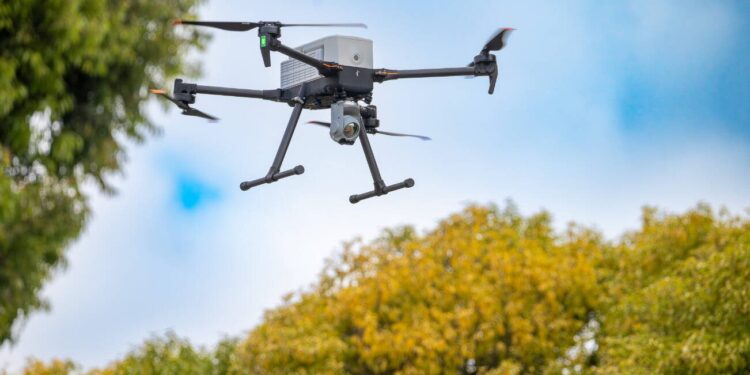Snohomish County officials are considering deploying drones as first responders after a successful pilot program demonstrated their effectiveness for firefighting and emergency response, though funding remains uncertain.
Marysville firefighters tested drone technology for one week this month, receiving unprecedented aerial support that allowed 911 dispatchers to deploy drones to emergency scenes before ground crews arrived. During a recent fire, the drone reached the scene three full minutes before firefighting crews, providing crucial advance intelligence.
“The drone is flying as firefighters are getting dressed for the incident and responding to the scene,” said Marysville Fire Chief Ned Vander Pol. Crews could watch live video feeds on monitors in their trucks, allowing them to assess fire intensity and develop response strategies while en route.
The drones provide real-time video feeds and thermal imaging that help identify the hottest areas of fires and predict spread patterns. The technology also has applications for search and rescue operations, finding missing children, locating vehicle accident victims, and assessing wildfire scope.
Public safety officials praised the technology’s capabilities, but no funding source has been identified to continue the program beyond the pilot phase. Vander Pol acknowledged that taxpayers would likely bear the costs, with expenses distributed across police and fire jurisdictions throughout Snohomish County.
“Like everything, funding is the big ticket item,” Vander Pol said. The exact cost has not been determined, creating uncertainty for budget planning processes.
Everett is planning to launch its own separate drone program, indicating regional interest in the technology despite funding obstacles. The parallel development suggests jurisdictions view drone capabilities as increasingly important for emergency response.
Vander Pol believes the advantages would be invaluable for various emergency situations, from vehicle accidents where occupants may be ejected to wildland fires where aerial perspective reveals the full scope of threatened areas. “It’s across the board a game changer for sure,” he said.
The fire chief expressed optimism that taxpayers will support the program once they understand its benefits, hoping for operational deployment within two years.







